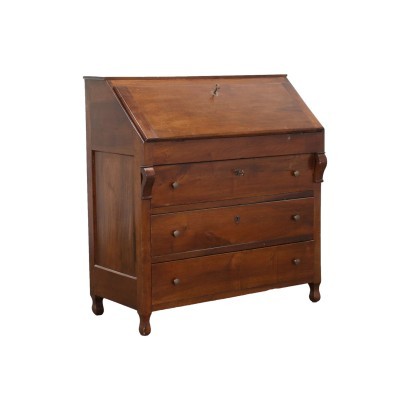Flap Silver Fir Walnut Italy XX Century.
Features
Style: Riproduzione in Stile
Age: 20th Century / 1901 - 2000
Origin: Italy
Main essence: Silver Fir , Walnut
Description
Flap in style, on the front it has three drawers surmounted by an opening flap door concealing a cabinet with compartment and drawers. In walnut, spruce interior.
Product Condition:
Product that due to age and usage may require restoration and resumption of polishing.
Dimensions (cm):
Height: 118
Width: 111
Depth: 55
Additional Information
Style: Riproduzione in Stile
Age: 20th Century / 1901 - 2000
20th Century / 1901 - 2000Main essence:
Silver Fir
Soft coniferous wood, used for rustic furniture or to build the chest, that is the structure, of furniture then veneered in more precious woods. It has been used since ancient times, its most valuable use is, in the Spruce variant, in the inlays of French antique furniture of the '700 . The spruce, more typical of northern Europe, in Italy grows mainly in the Eastern Alps at altitudes above 1300 m. The noblest use of this essence was in the construction of violins, guitars and cellos: Stradivari himself produced his famous violins with this wood.Walnut
Walnut wood comes from the plant whose botanical name is juglans regia , probably originally from the East but very common in Europe. Light or dark brown in color, it is a hard wood with a beautiful grain, widely used in antique furniture. It was the main essence in Italy throughout the Renaissance and later had a good diffusion in Europe, especially in England, until the advent of mahogany. It was used for solid wood furniture and sometimes carvings and inlays, its only big limitation is that it suffers a lot from woodworm. In France it was widely used more than anything else in the provinces. In the second half of the eighteenth century its use decreased significantly because mahogany and other exotic woods were preferred. It could also interest you

























